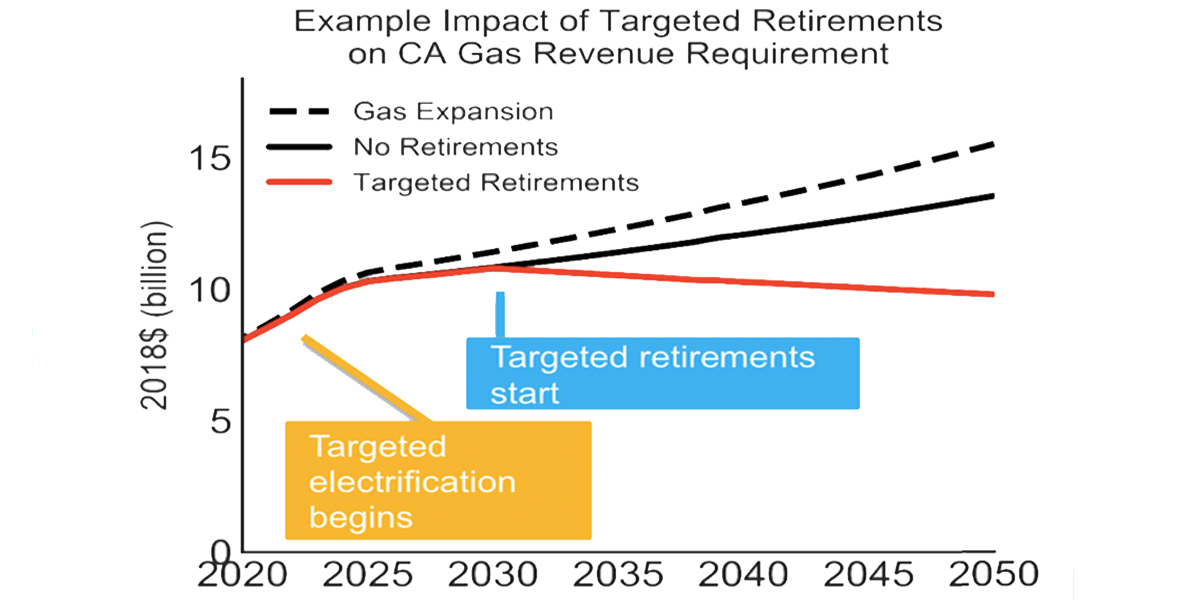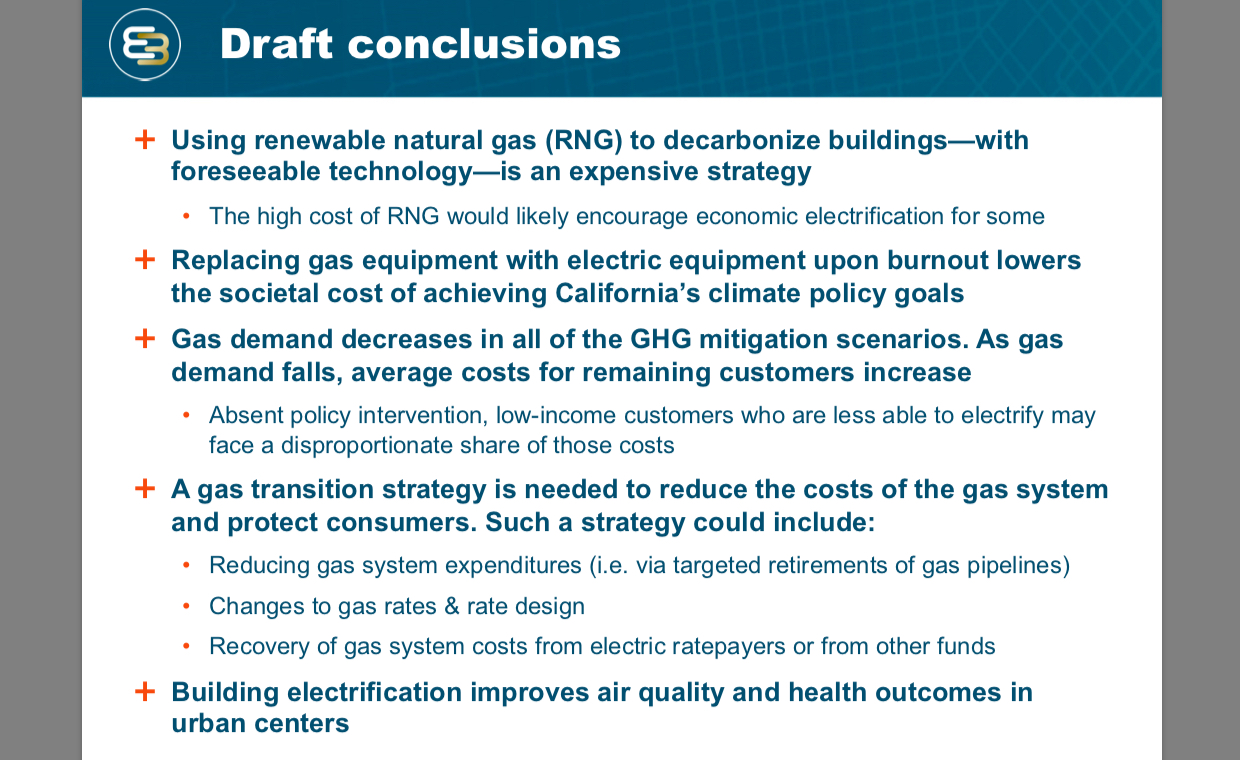For too long, California’s massive gas system has been the elephant in the room when policymakers talk about solutions to the climate crisis. But that’s beginning to change.
Last week, the California Energy Commission hosted a workshop to dig into Energy and Environmental Economics (E3) and UC Irvine’s latest “Future of Gas” study, which analyzes pathways to a low-carbon buildings sector. The buildings sector accounts for a quarter of the state’s climate pollution, yet notably lacks a meaningful decarbonization strategy.
The study’s conclusions are clear and compelling:
1. Building electrification is the lowest-cost and lowest-risk pathway for California to cut climate pollution.
 2. Contrary to what we hear from the gas industry, so-called “renewable natural gas” is not an alternative to electrification. E3 unequivocally finds that biomethane, synthetic gas, and hydrogen are too expensive and also face significant supply limits, noting that these fuels would be better used in sectors that are harder to electrify. Biomethane and synthetic gas also have identical safety risks and produce the same hazardous air pollution as fossil gas. Let’s put the nail in the coffin here, so we can all focus our time and energy on real, affordable, and scalable clean energy solutions.
2. Contrary to what we hear from the gas industry, so-called “renewable natural gas” is not an alternative to electrification. E3 unequivocally finds that biomethane, synthetic gas, and hydrogen are too expensive and also face significant supply limits, noting that these fuels would be better used in sectors that are harder to electrify. Biomethane and synthetic gas also have identical safety risks and produce the same hazardous air pollution as fossil gas. Let’s put the nail in the coffin here, so we can all focus our time and energy on real, affordable, and scalable clean energy solutions.
3. The longer we wait to transition from the gas system, the more costly it will be for Californians. We must immediately stop expanding the gas system and begin planning for targeted neighborhood-wide transitions from gas (i.e. pipeline retirement) with a focus on prioritizing and protecting low-income and frontline communities.

4. The report warns that doing nothing is not an option. Continued use of gas in homes and buildings is not viable in a carbon-constrained world, nor is it economical. California’s 150,000 miles of pipelines are aging and becoming increasingly expensive to safely maintain. Today, we pay more than $7.5 billion into the gas system annually and will soon have to make far greater investments to cover the safety upgrades needed following the deadly San Bruno gas pipeline explosion and the massive Aliso Canyon gas leak. SoCalGas expects a 30% rate increase, and PG&E expects a 15% rate increase for gas customers by 2022. E3 predicts that the rate hikes will not stop there but will extend out to 2050. Since gas use will continue to decline, gas utilities’ large costs will need to be shouldered by fewer customers (or fewer therms), thereby pushing gas bills even higher. The myth of gas as “clean, cheap, and reliable” is quickly crumbling.
The good news is that a concerted focus on electrification will help California not only reduce emissions but also dramatically improve outdoor air quality. (Note: The study does not cover indoor air pollution, to which gas appliances are also a major contributor). UC Irvine finds that replacing gas-combustion appliances like water heaters and space heaters with electric heat pumps would decrease NOx emissions, thereby reducing ozone and particulate matter (PM 2.5) across California. Ozone and PM 2.5 are particularly harmful pollutants, which can cause asthma, lung cancer, and premature death.
We can no longer deny the urgent need to transition from gas. Over 90% of Californians live in counties with dirty air. California can’t keep putting families at risk with air that violates ozone and particulate pollution levels.
However, we must be thoughtful about how we transition from gas. If we do not strategically plan for a well-managed transition that prioritizes low-income residents, we will leave lower-income communities vulnerable to higher gas bills. The study highlights significant concerns about rising costs as people leave the gas system, and substantial utility bills for low-income residents who, without policy support, would face the greatest barriers to electrification and bear the rapidly escalating costs of the gas system.
One of the smartest decarbonization policy solutions proposed by E3 begins to address solutions to lower costs, particularly for low-income residents, and would create new jobs for California’s workforce. As we start to strategically retire sections of the gas system in order to lower operating and maintenance costs, we can ensure this targeted transition from gas to clean energy is happening in low-income and environmental justice communities. These large-scale projects will also create a new flow of work for several decades to take apart the very system that has perpetuated the climate crisis.
The report is clear: Our path toward saving the climate is also how we can lower costs for Californians, prioritize health and affordability in low-income and environmental justice communities, and create new jobs. California has much to gain: a livable climate, cleaner air, more equitable access to clean energy, and new jobs. Now it's up to policymakers to bring utilities, labor, environmental justice advocates and other stakeholders to the table and put this study’s findings into action.

